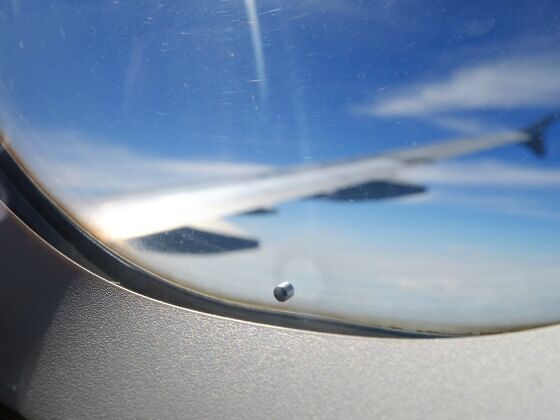You can learn a lot about airplanes by sitting in a window seat. You can observe how they fly above the clouds and see different parts of the plane in action, such as the wings or wheels. Spend enough time staring out of airplane windows, and you might also notice features of the windows themselves, such as the very small hole found at the bottom of most airplane windows. This may leave you wondering: why do airplane windows have holes?

How Those Tiny Holes in Airplane Windows Help to Keep You Safe
That tiny airplane window hole is called a bleed hole, and like most things on an aircraft, it’s there to keep you safe — in this case, by equalizing the air pressure.
@_hennylim_ The Mystery behind tiny holes in airplane windows! Check this video out to know! Follow my Official facebook page “Henny Joyce Lim” follow me on Instagram: _hennylim_ #fyp #HJL #cabincrewlife #tinyhole #window #cebupacific #groundstop ♬ Aesthetic – Tollan Kim
Bleed holes help to regulate the difference in air pressure inside and outside of the airplane cabin. Because airplanes fly at high altitudes where the air pressure and oxygen levels are too low for humans to withstand, cabins are pressurized to maintain an air pressure level comparable to an altitude of 8,000 feet or less. This explains why you can breathe comfortably at cruising altitudes but your ears might pop during takeoff or landing when the cabin pressure changes quickly.
While pressurized cabins reduce strain on the bodies of travelers, the difference in air pressure still puts strain on the bodies of airplanes. Airplane windows are particularly sensitive to this strain, which bleed holes help to alleviate.
It’s important to note that airplane windows are not like other windows. They have not one or two but three panes: a thin inside pane, which functions as a protective cover for other panes; a middle pane, where the bleed hole is located; and an outside pane, which belongs to the airplane’s exterior. While both the outer and middle panes are built to withstand the difference in air pressure, the bleed hole directs the strain onto the outer pane via an air gap, ensuring that the middle pane will remain intact in the unlikely event that the outer pane was to give out.
The small but mighty bleed hole also serves another function. In addition to equalizing air pressure, the bleed hole also help to regulate the cold outside temperature with the warmer cabin temperature. The air gap between the panes allows moisture to escape, therefore preventing fogging. This has positive safety implications, but for all of the diehard window seaters, you can also thank that funny little airplane window hole for preserving your clear views.